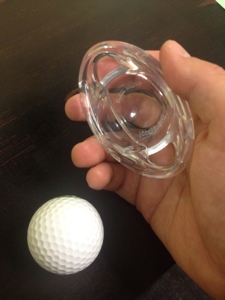Chiropractor Thousand Oaks | Adhesions in Muscle Fascia
If your therapist has spent countless hours digging into those pesky knots and your pain persists, you may want to consider looking at your fascia. A seemingly insignificant layer of tissue between between your skin and your muscle, fascia is probably the most overlooked soft tissue. It refuses to be ignored after a sprain/strain, causing pain and decreased muscle performance to make sure you take notice. As a chiropractor Thousand Oaks, seeing countless sports injuries and strains, I find it important to address the fascia.
Dr Hibbard, a chiropractor Thousand Oaks, releasing fascia using Golf Ball Massage’s SPAball Kaddy.
When injured, the fascia can become wrinkled and adhered around the muscle. It reminds me of a piece of plastic wrap that was unrolled but got bunched together before it could be used. Good luck straightening it out again. When the fascia has adhesions, it can interfere with proper proprioception and muscle contraction. You can identify adhesions by running a smooth instrument along the muscle surface. Strained or damaged fascia will feel grainy and bumpy, like bubble wrap, while a normal muscle will feel smooth. The adhesions are usually subtle enough to go unrecognized, as most patients are surprised to see feel the snack, crackle, pop beneath their skin.
Treatment is relatively easy. Unlike deep tissue or trigger point therapy where deep firm pressure is held along the muscle, the fascia needs a lighter contact on the surface of the skin. I have had great results using the smooth edge of a stainless steel or plastic tool. I demonstrate how to use the SPAball Kaddy’s edge for breaking up adhesions in the video above. Run the tool gently along the bubbly surface, helping it to free it up. Redness along the skin usually appears as the capillaries can be broken, but the process is relatively painless for the patient. Make sure to ice the area afterwords to prevent inflammation.

